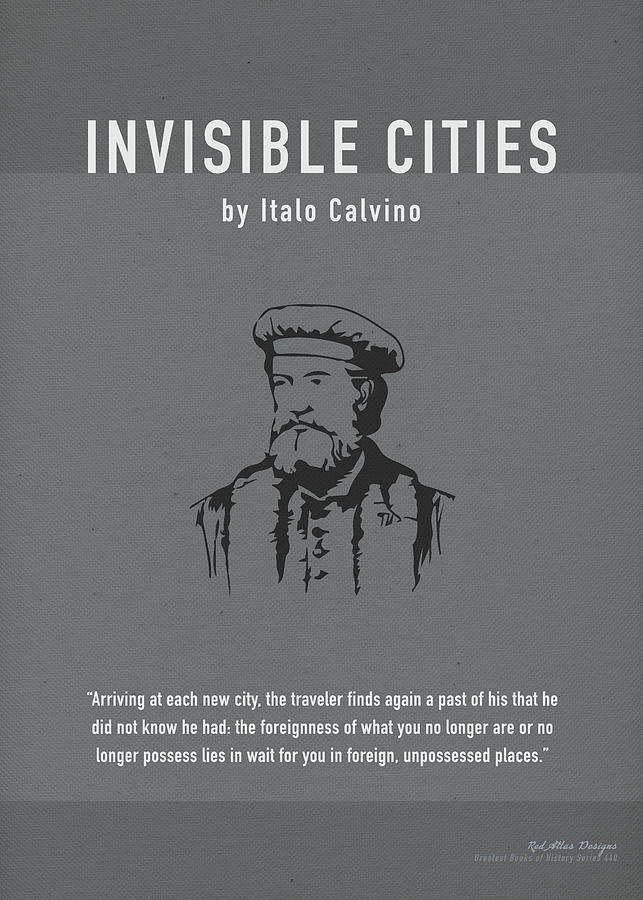
Photo Credit: Tibor Bognar-CorbisĪ modern European ruler listening to a visitor from China describe the country’s fabled rise would be better served with the opposite approach: As the traveler exits a train station, a woman hawks instant noodles and packaged chicken feet from a dingy metal cart, in front of concrete steps emptying out into a square flanked by ramshackle hotels and massed with peasants sitting on artificial cobblestones and chewing watermelon seeds. Shanghai officials assert that environmental protection has become a priority. In Invisible Cities, the novel by the great Italian writer Italo Calvino, Marco Polo dazzles the emperor of China, Kublai Khan, with 55 stories of cities he has visited, places where “the buildings have spiral staircases encrusted with spiral seashells,” a city of “zigzag” where the inhabitants “are spared the boredom of following the same streets every day,” and another with the option to “sleep, make tools, cook, accumulate gold, disrobe, reign, sell, question oracles.” The trick, it turns out, is that Polo’s Venice is so richly textured and dense that all his stories are about just one city. Isaac Stone Fish’s essay examines China’s megalopolises, seeming impressive on paper, but they are awful places to live. Italo Calvino, Invisible Cities Unlivable Cities By Isaac Stone Fish, from Foreig n Policy The second is risky and demands constant vigilance and apprehension: seek and learn to recognize who and what, in the midst of inferno, are not inferno, then make them endure, give them space.” The first is easy for many: accept the inferno and become such a part of it that you can no longer see it. There are two ways to escape suffering it. “The inferno of the living is not something that will be if there is one, it is what is already here, the inferno where we live every day, that we form by being together. He asked Marco Polo how humanity could avoid such nightmares, and the latter responded: He then pondered the cities that menace in nightmares and maledictions, such as Enoch, Babylon, Yahooland, Butua, Brave New World. Trouble happens when humans actually build them from their imagination.Įven the great Khan’s atlas contained maps of the imaginary promised lands: New Atlantis, Utopia, the City of the Sun, Oceana, Tamoé, New Harmony, New Lanark, Icaria. No one had even lived there or even visited. People gather at a high plateau to view Irene‘s skyline, imagining how life there could be. In one vignette, he tells about a city named Irene only seen from a distance, but never from inside. In Calvino‘s book, Marco Polo reports to China’s emperor Kublai Khan on the different cities he has visited.

In all, 43 cities have populations of one-million-plus today, with a projected 221 by 2025, a mass migration of millions from the impoverished Chinese countryside, leading to significant urban social and environmental problems.Ī recent essay in Foreign Policy ponders the issue in light of Italo Calvino’s Invisible Cities. The rapid industrialization of China includes proliferation of megacities, including Tianjin, Guangzhou, Shenzhen, Chongqing, Chengdu and Wuhan. This essay poses the what-if notion of imaginative urban design that could have overcome some of the problems of crowded, polluted urban mega-cities of 10 million residents or more.Ĭalvino’s Invisible Cities envisioned in a Nora Sturges painting: how do the latest Chinese megacities measure up? Chinese Urban Utopian Overdose Could Have Learned from Italo Calvino’s “Invisible Cities.” Polo’s descriptions of his travels are not chronological but thematic, as he classifies them under headings such as “Cities and Memory” or “Cities and Death.” At a 1983 Columbia University conference, Calvino said that Invisible Cities was “made as a polyhedron, and it has conclusions everywhere, written along all of its edges” (Elpis).The imaginative utopian vision of Italo Calvino in “Invisible Cities” should have inspired the urban planning of China’s cities undergoing rapid industrialization. While the journeys are all told in the present tense, they encompass time-travel that incorporates classical Greek and Roman deities in addition to the construction of modern metropolises like Los Angeles and New York. Polo describes the waste that accompanies consumerism, travelers’ fatigue, and the homogenization of the landscape. As the account of cities progresses, dystopian motifs emerge. These features include duality-for example, one city for the living and another for the dead-and paradox, in the sense that the cities’ greatest virtues are also the origin of their decline.

Although each city has a different female name, as his narrative progresses the reader comes to realize that they share features in common. The second narrative strand is Polo’s descriptions of the 55 cities he has visited.


 0 kommentar(er)
0 kommentar(er)
